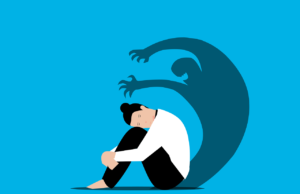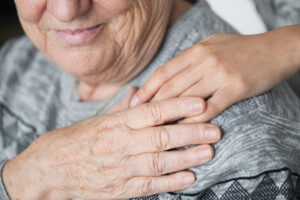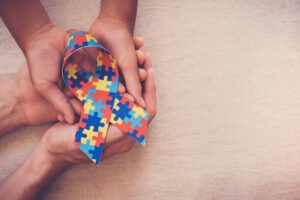
Living with cancer: a new reality

Living with cancer
Improved awareness in both the general public and the medical profession, as well as constant advances in diagnosis and treatment, are making it possible for more and more people to survive cancer (an umbrella term for many diseases) and live longer.
After the initial shock, indelibly colored by how and when the news is communicated, as well as other factors, including the resources available to the person at that time, the suspicion or diagnosis of cancer is inevitably quite stressful, and leads to an urgent call for action. In consultation with one’s family physician and oncologist, it is necessary to undergo specialized tests, and often, one considers the necessity of a second opinion, while slowly digesting the new reality.
Some people prefer to keep these developments to themselves for a while, before confiding in a family member or loved one, others prefer to meet the doctor with their partner or family member present.
While an initial attempt to minimize or deny the painful reality may soften the blow, as the reality of the diagnosis slowly sinks in, if the denial is such that it prevents one from undergoing necessary tests or receiving treatment, it is probably nonadaptive and may even be life-threatening.
Becoming involved in a dynamic, evolving treatment plan, often necessitates radical changes in one’s daily life and routine. The treatment and the treatment team become its focal point. Other issues and concerns are benched, as one prioritizes one’s needs. Cancer is a family affair, and the family as a whole strives to adjust to the new reality, that of life with cancer. This crisis can break the family or make it stronger. Sometimes professional help is needed to tip the scale in favor of growth and transformation. Moreover, joining and being part of a larger community of people struggling with similar issues is often key to feeling supported and understood, rather than alone with it all. There exist many support groups for both patients and family members. Sometimes these are held at the hospital, or via other organizations
* It is normal to feel anxious, in living with cancer. There is much ambiguity to contend with. A “new normal” is born, as one struggles to adapt to this new life.
* Cancer is a family affair, as it impacts the entire fabric of the family.
* Even when proclaimed “cancer-free,” there may remain the gnawing question,
“What about the possibility of recurrence? What then?”
* Resources are needed, to help deal with these very real existential questions.
In fairly advanced stages of the disease, some people may consciously choose not to undergo or continue to seek treatment. It may come to feel more burdensome than cost-effective, perhaps entail what may feel like unnecessary suffering. Instead, one may choose to live one’s last months or weeks outside the hospital setting, perhaps to spend more time with one’s loved ones, travel to a destination one desires to visit, or strive to complete a tantalizing task, all the while living in what may feel like “borrowed time.” It may prove to be a great challenge to maintain focus on the half-full glass, during this bittersweet period, when we are saying goodbye to all we love.
The importance of resources
A resource is anything that helps you feel stronger, calmer, better.
In order to cope with the stresses of living with cancer, it is important to have ready access to resources, both internal (e.g., belief, hope, a sense of humor) or external (e.g., a close friend or trusted doctor, music, an activity).
Access to resources builds our resilience and helps counterbalance and contain anxiety and stress, as well as feelings of doubt, despair, powerlessness, sadness, shame, guilt—whatever one is feeling at a given moment.
The body as a resource
An important resource that may be easily overlooked is one’s body—after all it pains us, is the source of our discontent. Some people may view their body as their enemy, feel angry and betrayed by it, fear the physical pain.
I would like to reframe this viewpoint and suggest that the body is an important ally in both sickness and in health, that it is well-worth befriending and cherishing—we need it, especially when we struggle with illness, pain and trauma.
It pays to cultivate a strong body awareness, become attuned to the nuances of one’s sensations and bodily rhythms, learn to rely on our inner “Felt-Sense,” that is, the overall inner “gestalt” of what we think, sense, feel and perceive in regard to something.[1] Our felt sense is our inner compass, and can help guide us as we navigate our lives. Moreover, we can learn how to discharge tension via the “washing machine” of the body. There are special exercises to modulate the pain, which may be exacerbated by traumatic experiences. Often, such experiences may be renegotiated and reprocessed (see sections/articles on SE and EMDR).
Powerlessness and the body
Flint & Elkins (2000, in press) address three main factors present in powerlessness:
(1) (“רפיון”)
Despite one’s intentions and efforts, one cannot prevent certain occurrences from taking place. Once they do, it is not possible to go back in time to undo them. The refusal or inability to accept this limitation tends to lead to unnecessary suffering, as one berates oneself that “I should have done so and so,” or, “If only I had done so and so, then…”
(2) (“אקראיות”)
Randomality—despite our belief to the contrary, there may not be a causal link between our actions and their consequences (e.g., Seligman’s “learned helplessness).
(3) (“נבערות”)
We feel powerless when lacking knowledge re: how to deal effectively with certain situations, or how to prevent/bypass them. (“What shall I do? This is beyond me.”).
It is possible to learn how to better contain and work through feelings which initially, we may fear and attempt to fight against/escape from—including a sense of powerlessness. Since reacting to that powelessness by attempting to fight it or flee from it (a spontaneous reaction of the sympathetic nervous systemthat kicks in to deal with threat) will only bring in its wake momentary relief, it pays to learn how to increasingly tolerate and contain these feelings. One way is by accepting that there are things one cannot change. This profound realization allows the parasympathetic nervous system to gain ascendance.
The next time you feel powerless vis a vis some challenging situation, notice where in the body you feel it, and which physical sensations comprise your sense of powerlessness. Learn to identify it and become curious about it, so you need not recoil from it. Perhaps once you accept and befriend them, these feelings can signal it is time for you to seek to reconnect to something larger than yourself, such as a higher power (however you may understand this). This sequence or reframe is part of a new treatment for addiction.[2]
I take this opportunity to quote the well-known Alcoholics Anonymous (AA) prayer that many are familiar with:
God [a higher being, however you understand it], grant me the serenity to accept the things I cannot change, the courage to change the things I can, and the wisdom to know the difference.
Accepting that there are things one cannot change, that sometimes one is powerless and may require the presence of a higher power outside oneself in such a situation—such as in dealing with addiction and its insatiable cravings, or in our context, living with a chronic illness—may help expand one’s window of tolerance with respect to difficult emotions. For example, religious people often find much comfort and succorance in their beliefs, even during the most trying times imaginable, like upon losing a loved one in a terrorist attack.
Being present, attuned to one’s feelings and physical bodily sensations (e.g., in the context of an emotion or feeling), helps us move away from dissociation towards the possibility of an integrative awareness or wholeness. Various therapies focus on the body and its sensations during the therapeutic work. Notable among these are Somatic Experiencing (SE) and Eye Movement Desensitization Reprocessing (EMDR).
Expanding one’s window of tolerance via body work
Modern neuroscience has demonstrated that cognition, emotion, and behavior are not only a function of the brain but also of the body. Thus, when the body shuts down upon defending against overwhelming emotions, all three areas may be compromised (Selvam). A good example is depression, which may affect not only behavior (e.g., social withdrawal, moving or speaking more slowly) but cognition (e.g., attention and concentration difficulties, short-term memory).
It is worth distinguishing between states of stress and dysregulation that contribute to the emotional experiences in question (e.g., sadness, anger, shame, guilt; sensori-motor affects such as emptinessand weakness upon sustaining the loss of someone close), and states of stress and dysregulation resulting from inadequate resources and support (e.g., internal and external) for the emotional experience. Not only negative, but also positive emotions, such as happiness, can be stressful, though usually, to a lesser degree than the so-called negative emotions. We need the positive emotions to counterbalance and allow us to work through and overcome the negative. Hence the importance of resources that make us feel empowered, strengthened, calmer—in a word—good. Their availability and accessibility strengthen our resilience, both emotional and physiological/immunological.
It is noted that in large measure, the capacity for emotions (identifying them, feeling them, expressing them, modulating them) is first developed via interactions with early caregivers and the susequent internalization of this co-regulation. Even as adults, we need co-regulation from those close to us. This influences the quality of attachment we experience, which ranges from insecure to secure.
The body may be seen as a container for one’s feelings.
We can develop and expand our ability to embody and thus contain a greater range of emotional experience. Raja Selvan, a seasoned Somatic Experiencing (SE) trainer who has worked extensively with Peter Levine and is currently based in Europe, has formulated a body-based approach which he refers to as Integral Somatic Psychotherapy (ISP). Its purpose is precisely that—to increase the capacity to tolerate affect (feelings) through the body.
ISP utilizes various clinical strategies that increase the level of regulation in our physiology and its ability (e.g., via bidirectional flow of information), to generate, transmit, sense, modulate, adjust, regulate, and tolerate emotional experience. These include: intent and awareness, parameters of breath and its rhythms, vocalization and sound, movement, resonance between patient and therapist, self-touch and therapist-touch.
While it is beyond the scope of this article to further explicate Selvam’s methodology and its theoretical underpinnings, I would like to offer one exercise which you may find helpful. It entails “spreading” the emotion you feel, so it becomes easier to tolerate.
Place one hand on the primary location of the feeling, and the other hand on a neighboring area. For example, you may feel sadness in your heart or chest. Place one hand there, the other just below the rib cage, above the diaphragm. You may also wish to vocalize and emit a sound that expresses what you feel, for example, a sigh. Try to stay with it—it should become increasingly easier to tolerate the sadness, and this is preferable to “ignoring” or attempting to suppress your feelings completely.
***
In summary, despite our limitations and powerlessness in many areas of life, including, ultimately, whether, for how long and how we are able to live with a chronic illness such as cancer, we can learn to be mindful of our feelings, both in general and particularly as they relate to our dis-ease, as well as their bodily referents (physical sensations) and attendant thoughts. To the extent that we succeed in being in touch with ourselves and to listen to our inner compass, as we learn to better tolerate our feelings and communicate with others, we gain some beneficial, nurturing support.
Perhaps when we feel powerless, we may turn to a spiritual figure or higher power (such as we understand it), and attempt to connect with it.
[1] See Eugene Gendlin’s seminal book, Focusing.
[2] Flint, T. & Elkins, Y. (in press).









